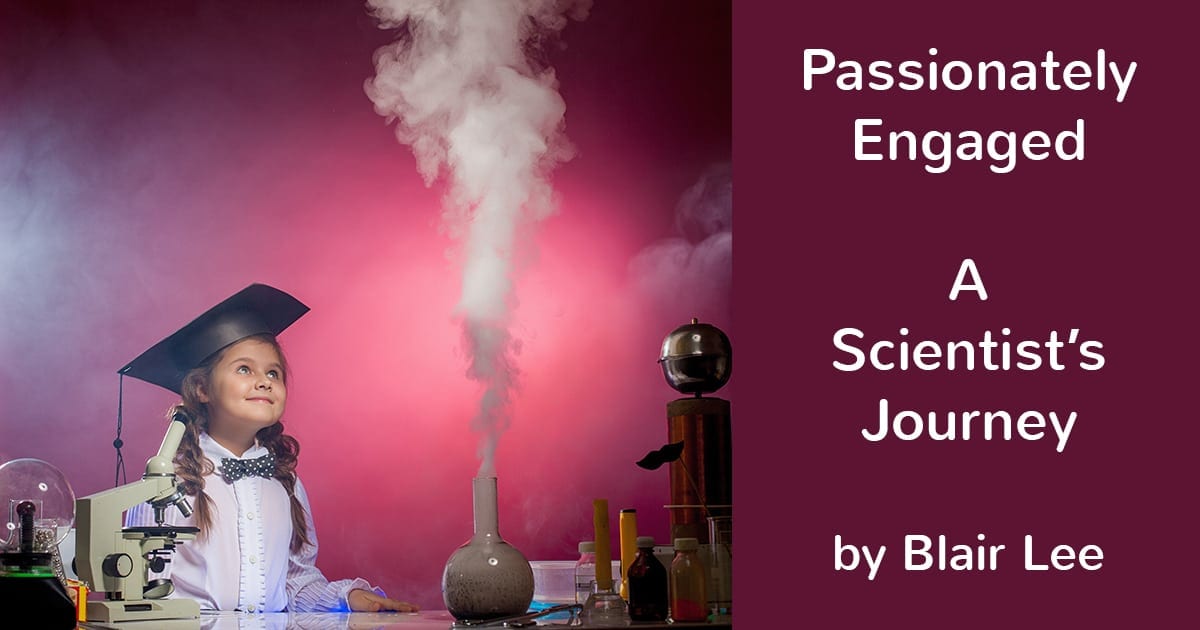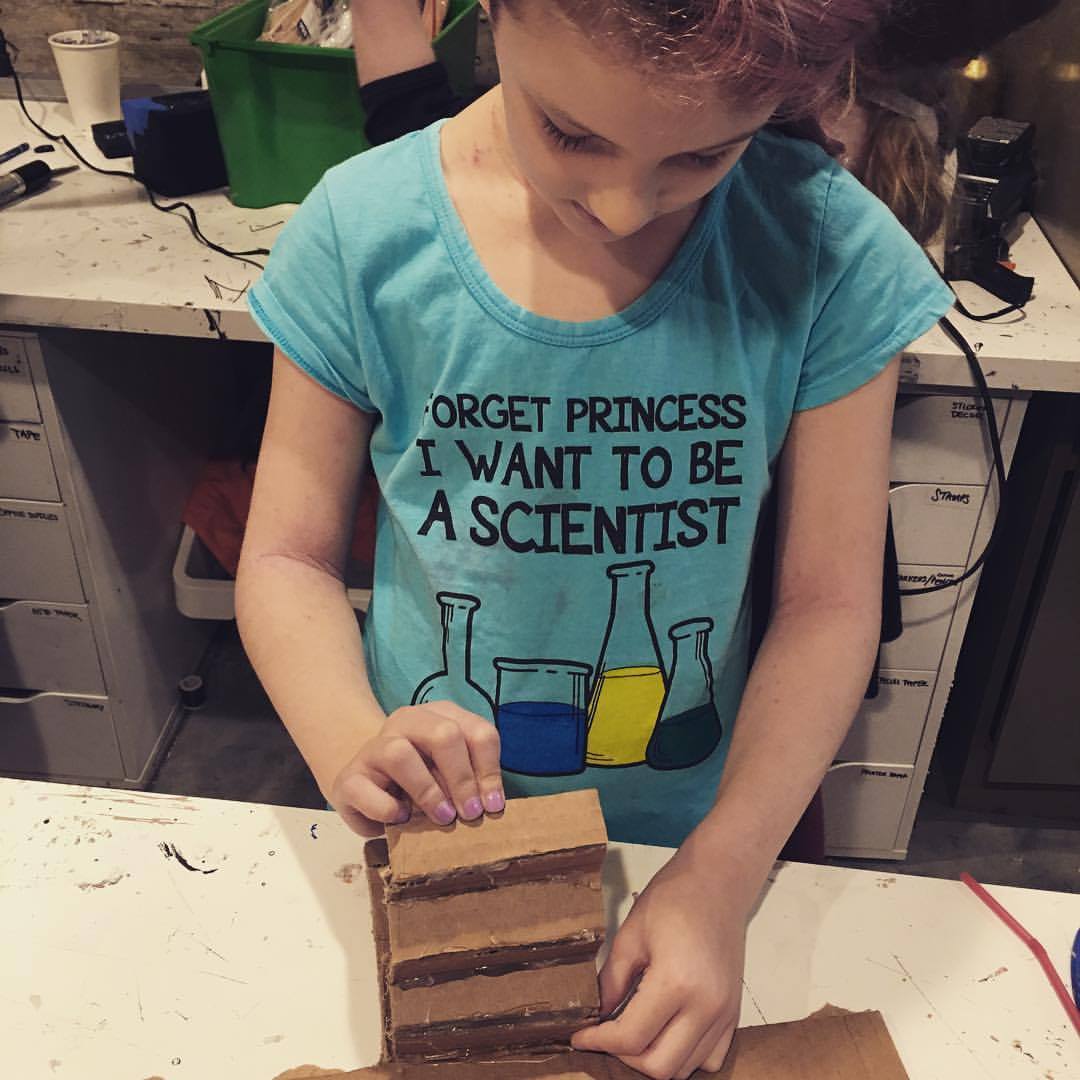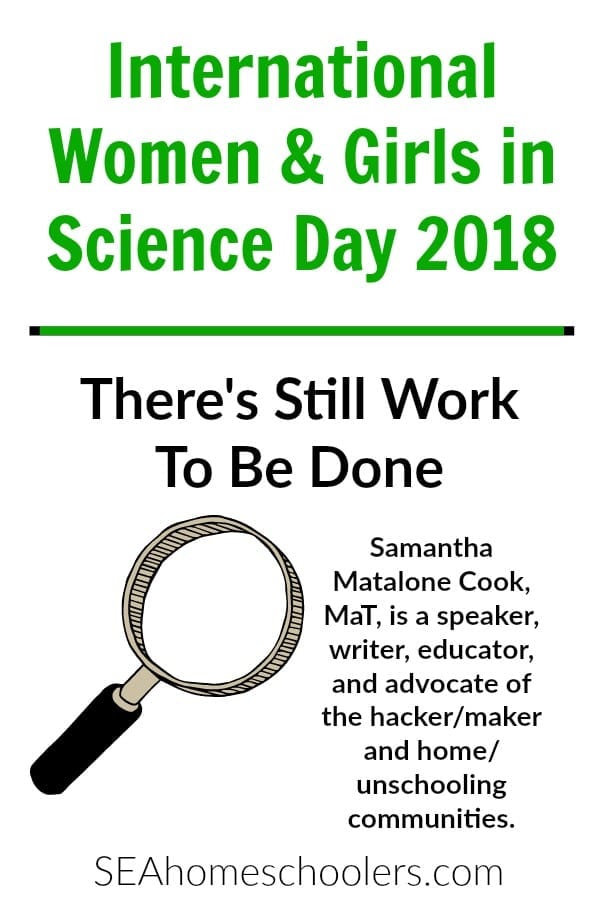Passionately Engaged: A Scientist’s Journey
Women in Science: Why I Became A Scientist
by Blair Lee, M.S.
My journey to becoming a scientist is one a homeschooler can appreciate. I became a scientist by falling down a rabbit hole while pursuing an interest that grew into a passion. I come from an entrepreneurial family. One that, for the most part, thinks the only reason to get a science degree is to become a medical doctor. I have always loved to read and write and if you’d asked my family what I was going to be when I grew up most of them, including me, would have said that I would become a book editor, attorney, or author. Science was not on my radar before college.
When I went to college I had no idea what I wanted to major in. So I took five classes in five disciplines my first semester: math, speech, science, English, and history. I very quickly fell in love with science. There is something about how the real world works that captivated my imagination. Take chemistry for instance, when you look at the relationship between energy, matter, and atomic particles it borders on magical. Except that it’s real.
The area I found the most captivating was how small changes on the molecular, atomic, and subatomic level can have large ranging consequences. Topics like evolution, the Big Bang, the destruction of the ozone hole, and radioactive decay are fascinating. I challenge anyone to look at how atomic particles behave, interact, change, and make matter to not be intellectually engaged. It is just so cool! When it comes to sheer coolness factor, Harry Potter and his cohorts have nothing on science.
Another thing I love about science is its changing nature. For example the theory of evolution, Darwinian evolution focuses on observations but doesn’t include genetics, because Darwin didn’t know about genetics. Now that scientists understand the mechanism driving evolution, genetic variability and mutation, genetics has become the centerpiece of evolutionary biology. I love how in science that the more we understand, the more we know what we don’t know. There is no end to what is left to be discovered. Studying science is endlessly engaging as your brain keeps having new information to work through and to include for a deeper understanding, but you never get to the end of what there is to learn.
One of the side notes to having very little science knowledge when I started college was that I had to spend a lot of extra study time learning the basics. During the first year, I was cramming all the time and making myself a pest during my professor’s office hours. My need to go back to the basics and learn not just science concepts and facts but also how science worked is how I came to write the style of science books that I write, where there is a focus on foundational fundamentals and basics and on how science is best learned not just as a discipline but as an active endeavor.
I graduated with two bachelors, an Ecology, Behavior, and Evolution degree from the biology department and a general chemistry degree. I was officially a scientist. After that I went to graduate school. This was a turning point in my life, and one of the most angst filled. I had planned and dreamed of graduate school. It turned out that I did not like the day-to-day grind working in a lab. What I did love was the teaching I was doing as required by the chemistry department for their first year graduate students. But… I had never wanted to be a teacher! Maybe after I got my PhD… but before… NO!
It took a serious bout of reflection about what was important. Was my doctorate more important or was it more important to be passionately engaged? So, I got out with a master’s degree in chemistry. While I was in the process of doing this, I received a phone call from a professor I had. He had taken over the chemistry department at a local community college. He offered me a job. I knew I made the right choice almost right away when I started teaching.
You might be wondering why I didn’t switch from a PhD in environmental chemistry to getting a PhD in science education. It didn’t occur to me to do that for years. I actually wrote a query letter to two PhD programs after I finished R.E.A.L. Science Odyssey Biology 2, and was offered a spot at one of them. In the intervening years since retiring from teaching I have focused on affecting the conversation and methodology surrounding how science is best learned. I started writing science courses, because I think if you are going to discuss how things should be different you should give solid, practical examples. After being accepted into a PhD program I had a decision to make. I decided to turn the spot down and keep writing science courses and pushing for change within the secular homeschool community. I think there is a revolution in education happening right now, and much of the energy for it is coming from this community!
I think it’s really important that science literacy becomes a focus of education. You don’t have to look further than climate change denial to understand how important science literacy is. At this point in my working career I am devoting my time to developing materials that give a solid foundation in basic science concepts, where the focus is on how science is best learned as an active endeavor where a concept is presented and immediately followed by a direct application of that concept. Through this work I’m hoping that more people will have ownership over how the natural and physical world works.
Science is a discipline where the answers are open ended. It is the discipline that explains the fabric of how the natural and physical world work. Scientifically it makes no sense that you would be more fascinated by science if you have an X and Y chromosome as opposed to two X chromosomes.
As an undergraduate and graduate student in college, I was the only female in some of my science classes. I was in those classes because the discipline fascinated me. It didn’t matter to me what the gender of the other students was. Probably because of how interested I was in the material, by an overwhelming majority, my male colleagues, professors and students, were welcoming and encouraging. But if they hadn’t been it would not have bothered me.
My advice to any female who wants to become a scientist is to go for it. If you choose a physical science such as chemistry, you will find that most of your fellow classmates are males. As happened to me on a handful of occasions, you might even run into men who wonder why you, a female, are pursuing science. The best advice I can give you is to ignore them. If they don’t know why you are there, then they probably don’t find the topic as fascinating as you do. A better question would be what they are doing pursuing science.
Other posts by Blair Lee
A Science Lab in Your Home
Why Neutral Science Isn’t Neutral



